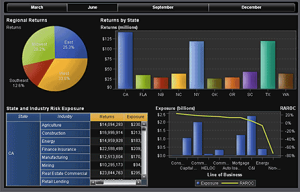
As data analysis becomes increasingly integral to decision-making across various industries, it’s essential to address the ethical concerns that accompany it. Ethical issues in data analysis can impact privacy, fairness, transparency, and trust. This blog will explore key ethical issues in data analysis and provide guidelines on how to address them.
1. Data Privacy and Confidentiality
Issue:
Handling sensitive personal data can lead to privacy breaches if not managed correctly. Unauthorized access, data leaks, and improper use of data can violate individuals’ privacy rights.
Guidelines:
- Data Anonymization: Remove personally identifiable information (PII) from datasets to protect individuals’ identities.
- Access Controls: Implement strict access controls to limit who can view and use sensitive data.
- Encryption: Use encryption to protect data both at rest and in transit.
- Compliance: Ensure compliance with data privacy regulations such as GDPR, CCPA, and HIPAA.
Example:
When analyzing healthcare data, ensure that patient information is anonymized and access is restricted to authorized personnel only.
2. Informed Consent
Issue:
Collecting and analyzing data without individuals’ informed consent can lead to ethical and legal issues. Users should be aware of how their data will be used.
Guidelines:
- Transparency: Clearly inform users about what data is being collected, how it will be used, and who will have access to it.
- Opt-In/Opt-Out Options: Provide users with the option to opt-in or opt-out of data collection.
- Consent Documentation: Maintain records of user consent for data collection and usage.
Example:
When conducting a survey, provide participants with a clear consent form explaining the purpose of the survey and how their data will be used.
3. Data Bias and Fairness
Issue:
Data bias can lead to unfair or discriminatory outcomes in data analysis. Biased data can reflect historical inequalities and reinforce them in decision-making processes.
Guidelines:
- Bias Detection: Regularly check for and mitigate biases in your data and analysis processes.
- Diverse Data Sources: Use diverse and representative data sources to ensure fairness.
- Algorithm Audits: Conduct audits of algorithms to identify and correct biases.
Example:
In hiring processes, ensure that the data used for training algorithms is diverse and does not reflect historical biases against certain groups.
4. Misleading Data Visualization
Issue:
Misleading data visualizations can distort the interpretation of data and lead to incorrect conclusions. This can be due to intentional manipulation or poor design choices.
Guidelines:
- Accuracy: Ensure that visualizations accurately represent the data and its implications.
- Clarity: Use clear and unambiguous visualizations that are easy to understand.
- Context: Provide context and explanations for the visualizations to avoid misinterpretation.
Example:
When creating a bar chart, ensure that the y-axis starts at zero to accurately represent the differences between data points.
5. Ethical Use of Predictive Analytics
Issue:
Predictive analytics can be used in ways that negatively impact individuals or groups, such as in predictive policing or credit scoring.
Guidelines:
- Transparency: Be transparent about how predictive models are developed and used.
- Accountability: Establish accountability for the outcomes of predictive models and address any negative impacts.
- Ethical Review: Conduct ethical reviews of predictive analytics projects to assess potential risks and benefits.
Example:
In predictive policing, ensure that the use of predictive models does not disproportionately target certain communities or exacerbate existing biases.
6. Data Ownership and Intellectual Property
Issue:
Determining who owns the data and respecting intellectual property rights can be challenging. Unauthorized use of proprietary data can lead to legal and ethical issues.
Guidelines:
- Data Ownership Agreements: Clearly define data ownership and usage rights in agreements with data providers.
- Respect for IP: Respect intellectual property rights and avoid using proprietary data without permission.
- Attribution: Properly attribute data sources and give credit to data providers.
Example:
When using third-party data for research, obtain the necessary permissions and attribute the data source appropriately.
7. Ethical Implications of Data-Driven Decisions
Issue:
Data-driven decisions can have significant ethical implications, particularly when they affect people’s lives, such as in healthcare, finance, and criminal justice.
Guidelines:
- Impact Assessment: Assess the potential ethical implications of data-driven decisions.
- Stakeholder Engagement: Engage with stakeholders to understand their perspectives and concerns.
- Ethical Principles: Apply ethical principles such as fairness, accountability, and transparency in decision-making processes.
Example:
In healthcare, consider the ethical implications of using data to allocate medical resources and ensure that decisions are made fairly and transparently.
Conclusion
Ethical issues in data analysis are complex and multifaceted, requiring careful consideration and proactive management. By adhering to ethical guidelines related to data privacy, informed consent, bias, data visualization, predictive analytics, data ownership, and the implications of data-driven decisions, analysts can ensure that their work respects individuals’ rights and promotes fairness and transparency. Addressing these ethical challenges is not only a moral imperative but also essential for maintaining trust and credibility in the field of data analysis.








